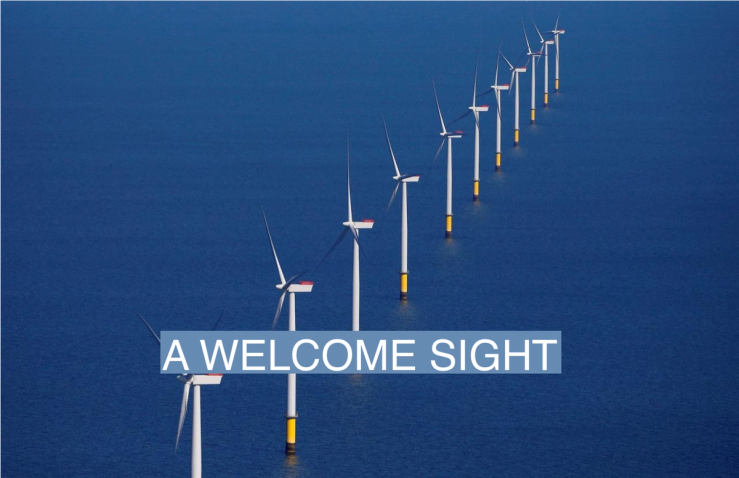The News
The Biden administration approved a huge new offshore wind farm near New Jersey called Ocean Wind 1 which is to be built by Orsted, a Danish wind farm developer.
Developers like Orsted see the U.S. as a lucrative market, thanks in particular to the Inflation Reduction Act incentives. However, inflation and supply chain bottlenecks have sharply driven up costs for installations in the country.
We’ve rounded up sharp analysis from experts on the White House’s ambitions to ramp up offshore energy production and the challenges facing the U.S.’s wind energy industry.
Insights
- High costs and a lack of state and federal government support has held back wind development power in the U.S. for years. But the Biden administration set a goal of deploying 30 gigawatts of offshore wind power by 2030 — and one expert thinks it’s an achievable, if ambitious goal. Erin Baker, a professor of industrial engineering at the University of Massachusetts, Amherst, said last year that with price reductions in wind and offshore wind — about 50% over six years — “I think it’s very doable.” — Popular Science
- Local utility companies are obstructing a wider transition to wind generation, argues David Pomerantz, the head of the Energy and Policy Institute. Utilities have often “funded opposition to policies that would speed clean energy,” frequently using customers’ money to do so, Pomerantz writes. Utilities have been particularly opposed to the development of “desperately needed long-range transmission wires for clean energy.” — The New York Times
- The U.S. has been a laggard when it comes to offshore wind compared to Europe. Whereas the White House hopes to add 30 GW of offshore wind capacity by the end of the decade, Europe already has about 255 GW, and plans to add a further 129 GW in the next five years. Cameron Dunn, an analyst with U.K.-based environment consultancy firm Arup, argues that the delay in getting U.S. wind projects off the ground is due to key differences in the two markets: For one, engineers in the U.S. are taking on more risks to develop projects than they do in Europe. Meanwhile, different environmental considerations — like the habitat losses of endangered species — can also hinder project development.
Know More
The U.S. will need to make large infrastructure investments to meet the ambitious production targets. Around 2,100 turbines, 6,800 miles of cable, and 58 crew transfer vessels will be required, the National Renewable Energy Laboratory said. Permitting for new ports and manufacturing facilities also have to be accelerated, according to industry experts, at a cost of at least $22 billion.
Restrictions dictating that only U.S. ships can transport goods between U.S. ports should be eased, some experts say, as it makes shipping material from Europe harder to move between ports during the installation of turbines.

